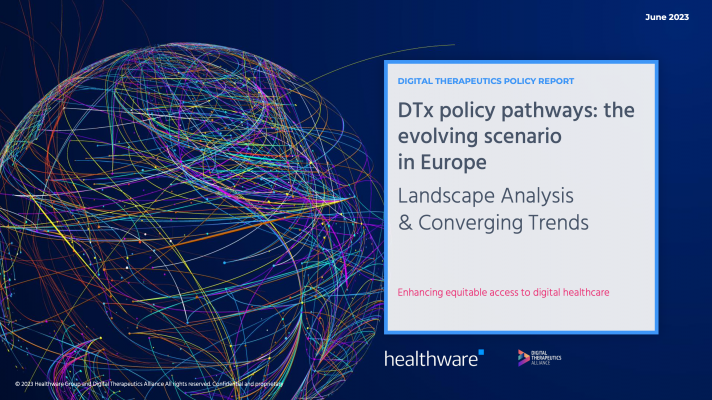
The healthcare sector in almost all countries faced the enormous challenge of providing more cost-effective care to an ageing population, while simultaneously being under the greatest scrutiny and expectation from citizens due to the pandemic. The COVID-19 crisis brought to light strategic questions about healthcare sustainability and digital transformation.
Value in healthcare is defined as the relation of patient-relevant outcomes achieved in comparision to the patient-level costs. While value-based healthcare (VBHC) is considered the most promising guiding principle for the new generation of health services, it implies radical, even disruptive changes to the current practice. Despite each healthcare system having an individual status in digitisation progress, there is little doubt that digitisation also accelerates the transformation speed of healthcare systems across the globe.
The question is how do these two megatrends link and co-exist with each other? Is it possible to achieve balanced and enriching progress? And what requirements should be in place for digital technologies and healthcare systems that are aiming for high value care?
The most obvious outcomes of the last year are various technological breakthroughs which enabled care and helped citizens to avoid unnecessary physical contact. Telehealth certainly showed an astronomical growth and was finally included in the continuum of care. This also influenced the increased use of digital applications and tools for self-measuring and self-management of health conditions. However, the results of this challenging experience may be interpreted as having both positive and negative impacts in terms of the value perspective.
Virtual visits were highlighted for being cost-effective and several studies showed telehealth to be specifically efficient for patients living with “chronic but under control” conditions. On the other hand, the rapid access improvement still did not ultimately define regulations and created healthcare overuse, shifting focus from value to volume. Despite the implementation requirements for telehealth solutions being defined several times, the majority still cover IT and administrative parts - and are less focused on the adoption to the real clinical needs.
The rise of patient power
The growing consumerisation of healthcare and patient empowerment caused an exponential growth in healthcare apps and tools development and raised the questions of their safety and effectiveness. The potential inclusion into standard medical care requires a holistic approach of assessment and selection for these solutions.
A few European countries made progress in identifying necessary requirements and laid the foundation for a digital technologies criteria as a part of HTA framework (Health Technology Assessment). The Digital Technology Assessment Criteria (DTAC) introduced in the UK, Digi-HTA from Finland and Digital Healthcare Act - DVG in Germany have many common points.
A traditional HTA covers several important areas: the health problem and current use of technology; description and technical characteristics of the new technology; safety assessment; clinical effectiveness; economic evaluation (cost-effectiveness analysis or cost-utility analysis); ethical analysis; and legal, social and organisational aspects. However, the HTA lacks in the key areas specific for digital solutions like accessibility, competing algorithms comparison, data security and protection. There are also other concerns about the real-world performance and the real effectiveness of solutions. The HTA evaluation process is based on controlled trials, which often show better results than "average care units for average patients."
Value-based healthcare principles offer the base for the required work needed for the shortcomings of the current regulatory frameworks. They define value as a shared goal for all stakeholders.
Steps such as ongoing real-world performance monitoring and assessment; regular updates when certain technology improvements are achieved; and structured feedback loops potentially bring the best possible performance throughout the lifecycles of digital solutions and thus, better outcomes for patients. It requires robust, transparent and balanced frameworks in place and their elements being incorporated into the manufacturers’ development processes.
Improving outcomes remains key
We experience multiple dimension transformations in healthcare systems and see different countries establishing conditions to achieve healthcare goals and to support the wide adoption of the latest health technologies. It is clear that the future of HTA frameworks is in constant development due to the specific nature of different technologies (especially AI and robotics). However, the statement, “the ultimate aim is to produce as much good and as little harm as possible for each patient, with the reasonable costs to the society,” should remain unchanged.
Paulus Torkki is the associate professor of healthcare operations management at University of Helsinki.
Marianna Imenokhoeva is the founder of LinktoMedicine and a HIMSS Future50 Innovation Leader, International Class of 2019.








def4.jpg)








